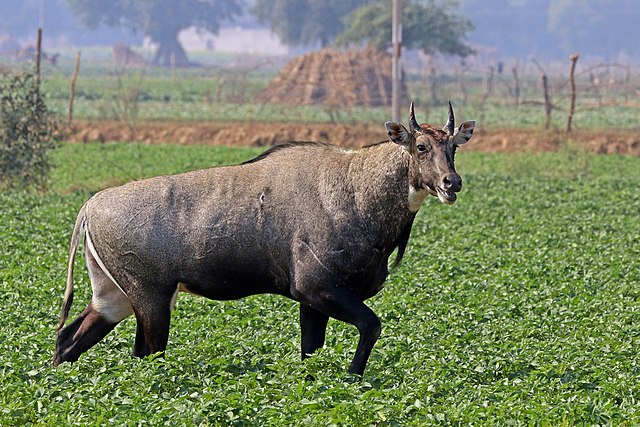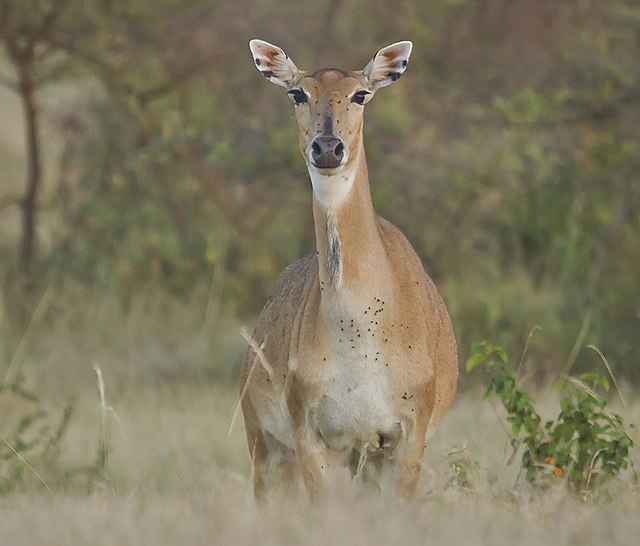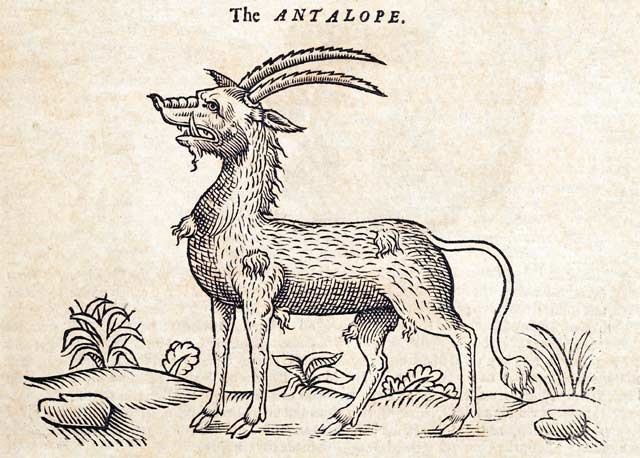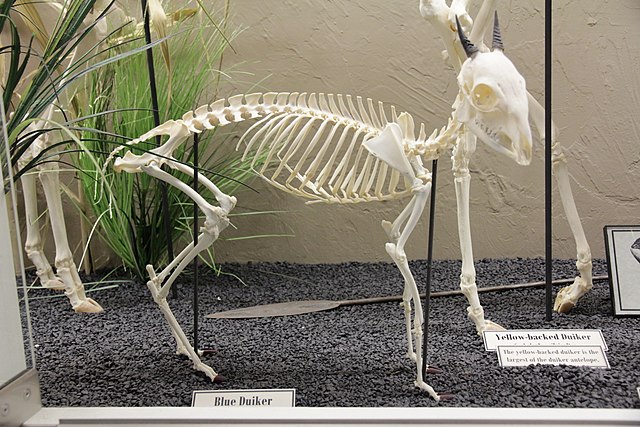The nilgai is the largest antelope of Asia, and is ubiquitous across the northern Indian subcontinent. It is the sole member of the genus Boselaphus, which was first described by Peter Simon Pallas in 1766. The nilgai stands 1–1.5 m (3.3–4.9 ft) at the shoulder; males weigh 109–288 kg (240–635 lb), and the lighter females 100–213 kg (220–470 lb). A sturdy thin-legged antelope, the nilgai is characterised by a sloping back, a deep neck with a white patch on the throat, a short crest of hair along the neck terminating in a tuft, and white facial spots. A column of pendant coarse hair hangs from the dewlap ridge below the white patch. Sexual dimorphism is prominent – while females and juveniles are orange to tawny, adult males have a bluish-grey coat. Only males possess horns, 15–24 cm (5.9–9.4 in) long.
Nilgai
Close view of a male nilgai showing the facial markings, throat patch, beard and short horns
Skull of a nilgai
in the Grassland
The term antelope refers to numerous extant or recently extinct species of the ruminant artiodactyl family Bovidae that are indigenous to most of Africa, India, the Middle East, Central Asia, and a small area of Eastern Europe. Antelopes do not form a monophyletic group, as some antelopes are more closely related to other bovid groups, like bovines, goats, and sheep, than to other antelopes.
Antelope
A bull sable antelope among the trees in the African savanna
Illustration from The History of Four-footed Beasts (1607)
Blue duiker (Philantomba monticola) skeleton on display at the Museum of Osteology.








